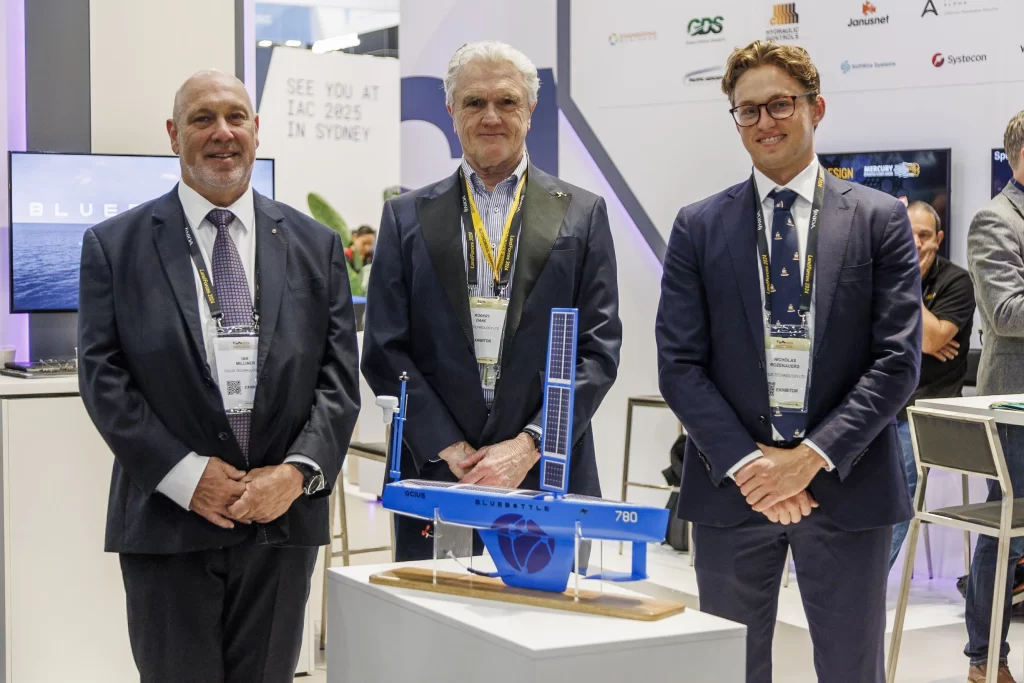Behind the scenes of the Bluebottle uncrewed surface vessel lies an idea that grew from a hobbyist’s experiment to become a global leader.
Australia is surrounded by eight million square kilometres of sovereign waters, yet has only 28 Australian Border Force boats patrolling its borders.
That was the opportunity identified by Ocius Technology in the nascent days of Bluebottle, its uncrewed surface vessel (USV). An autonomous boat powered by renewables and able to go to sea indefinitely, it was the perfect solution to plug this significant maritime surveillance gap.
The pitch was successful. Department of Defence grants to develop the first fleet of Bluebottle USVs have led to its purchase of 15 craft. Many more are to come after the department’s Integrated Investment Plan last year flagged Bluebottle’s ongoing importance to Australia’s maritime surveillance. Bluebottle has also attracted the attention of the United States military.
As well as defence and border patrol, the autonomous maritime drones are applied in a wide range of uses including environmental monitoring, and resource and scientific exploration.
For the team at Ocius, Bluebottle represents years of work coming to fruition.
Bluebottle’s birth
The year was 1997. Ocius Founder and Chief Executive Robert Dane, then a doctor based in the NSW coastal town of Ulladulla, decided to enter the solar-powered Advanced Technology Boat Race on Lake Burley Griffith in Canberra.
Nick Rozenauers, Head of Non-Defence Business Development at Ocius, tells the story: “Robert thought, ‘Why can’t I make a sail to help propel me as well as act like a solar catcher?’ He crossed the line first in that 60-km race by 30 km – he literally lapped the competition.”
That result led Dane to patent his innovative Solar Sailor, a moveable hard sail that harnesses both solar and wind energy. The award-winning idea can be seen in the hybrid electric commercial passenger ferries operated by the Hong Kong Jockey Club from Sai Kung to Kau Sai Chau.
But it took a conversation with a US admiral to spark the idea for Bluebottle.
“He asked Robert if he could build a boat that could go to sea forever,” Rozenauers said.
Dane subsequently began the design process for his unique maritime drone, applying Solar Sailor technology to an autonomous craft.

Proof of concept
Dane’s vision was for a robust, slow-moving USV which can hold a variety of payloads, and operate for long durations at sea and in all kinds of weather. By carrying an array of sensors designed for specific tasks, whether above or below water, it could function as a “sea satellite”. The resulting Bluebottle is part of ocean science technology’s movement towards safer and sustainable alternatives to explore, monitor and quantify the globe’s ocean environments.
“The offshore maritime industry is still dominated by diesel-fuelled ships and has lagged on innovation,” Rozenauers said. “There are all kinds of challenges. Jobs can be dangerous, weather is a significant influence, it’s prohibitively expensive to go offshore and the human factor means they can only be out there for so long.
“There’s also a growing environmental concern, as shipping and the global marine industry are major contributors to greenhouse gas emissions.”
The early days of Bluebottle in the mid-2000s saw five scale models created. Each was fixed with a horizontal rudder “flipper” along differing sections of the underside of the model. When tested in a wave tank for speed to reach a set distance, the model with a sole front flipper attached performed best. The original three-metre Blue Nemo prototype (now on display at the Australian National Maritime Museum) was subsequently fitted with one front flipper.
Read more: How autonomous warfare is changing the game
Vital statistics
The modern Bluebottle differs from other marine autonomous systems by “harvesting all the weather”. Utilising 100 per cent renewable energy, its three propulsion units are powered by the wind, waves and sun.
Solar panels power a battery and an electric motor. The hard solar cell-clad sail utilises both wind and solar, automatically adjusting to weather conditions and folding down when required. Bluebottle’s rudder is fitted with a fibreglass appendage, harnessing wave power and acting as a propulsion system as the boat pitches up and down.
“By generating its own power, each Bluebottle can theoretically stay at sea indefinitely,” Rozenauers said. “It allows us to go to sea for months at a time without needing to return home. The longest mission so far is 107 days.”

Satellite communications keep Bluebottles in touch with shore, meaning there is also no theoretical limit on the distances they can travel from the port of launch (the furthest to date is around 812NM).
Each craft must be continually monitored from shore, with one human having oversight of between five and 10 boats at a time. While Bluebottles are programmed to operate autonomously, they are also able to be remotely controlled.
Another Bluebottle design efficiency comes in its size: each seven-metre-long Bluebottle can be launched from a standard boat ramp by an SUV and fitted into a standard 12.2-m shipping container.
Array of applications
Navy warfare innovation director-general Commodore Darron Kavanagh has described Bluebottle’s innovation as an “absolute game changer” in maritime surveillance.
A contract with the Australian Border Force means Bluebottles now operate 24 hours a day, seven days a week, monitoring vast areas of ocean north of the continent.
The cameras and radars carried by Bluebottles can be equipped for myriad non-defence purposes. Significant payloads of around 150-200 kg allows the USVs to be used for oceanography, scientific and environmental studies. When the Japanese island volcano Nishinoshima erupted in 2023, a Bluebottle was employed to record the event from far closer than a human-crewed boat could safely have done.
Sensor arrays have been used to determine if marine mammals such as whales are in the vicinity of seismic surveys conducted by the oil and gas industries, replacing marine mammal observers in boats scanning the ocean with binoculars.
A partnership announced mid-last year with BMT, a leader in global maritime design and technical consultancy, will pursue the idea of data as a service.
“We’ll go out in commercial areas of interest, and collect and on-sell the data,” Rozenauers said. “Because we’ve got the low-cost technology to put these sensors out at scale, we can take the risk to collect this data and sell it to wind-farm developers or scientific researchers, for example. It’s a huge de-risking event for them.”

Sailing into the future
Things are now ramping up at Bluebottle HQ. After teaming with the University of New South Wales, where the company leased a shed for the first years of its life, Ocius has now moved to its own premises in Sydney’s Alexandria. Over the past five years, it has grown from five to 80 employees.
Like the company, Bluebottles continue to evolve. The recent introduction of a new class of Bluebottle, BETH 2.0, has seen payloads increase up to 450 kg. Slightly bigger than the previous Bluebottles, at 7.4 m, they are easier to build and fit out, while still using the same rudder-and-flipper combination, winch and internal mechatronics and power systems.
The focus now is to produce Bluebottles at scale. Fitting out one of the modular craft with mechatronics, computers and communications takes a week; a new pre-production facility in Morisset, near the builder of the fibreglass boat hulls, is hoped to result in fortnightly completion of each craft.

Ocius has taken a trial-and-error approach to pushing the frontiers of the Bluebottle’s capabilities, and improving its communications and software systems. Its engineers are now fixing problems on board a Bluebottle hundreds of kilometres at sea. As the company’s analogy goes, it’s very similar to NASA engineers fixing problems on the Mars Rover from earth.
“As we’ve been gaining experience operating the Bluebottles, we’ve really increased our confidence to push the operating envelope longer,” Rozenauers said. “We could do everything in a systems engineering risk-based way, but we’re going to learn so much more by recording everything we do and sending it out there, breaking it and bringing it back, rather than sitting behind a desk. That’s really what this Australian Border Force operational contract has allowed us to do.”
Informed risk-taking aside, the record ought to note there is very little risk of finding a rogue Bluebottle floating aimlessly around the ocean.
“We’ve never lost a boat. If they ever have to be recovered, a patrol boat on its way home will just swing past and pick it up.”
This article was originally published in the May 2025 issue of create with the headline “Seaborne strategy”.
Find out whether Australia is ready to embrace autonomous technology in the rail industry at this on-demand webinar.



